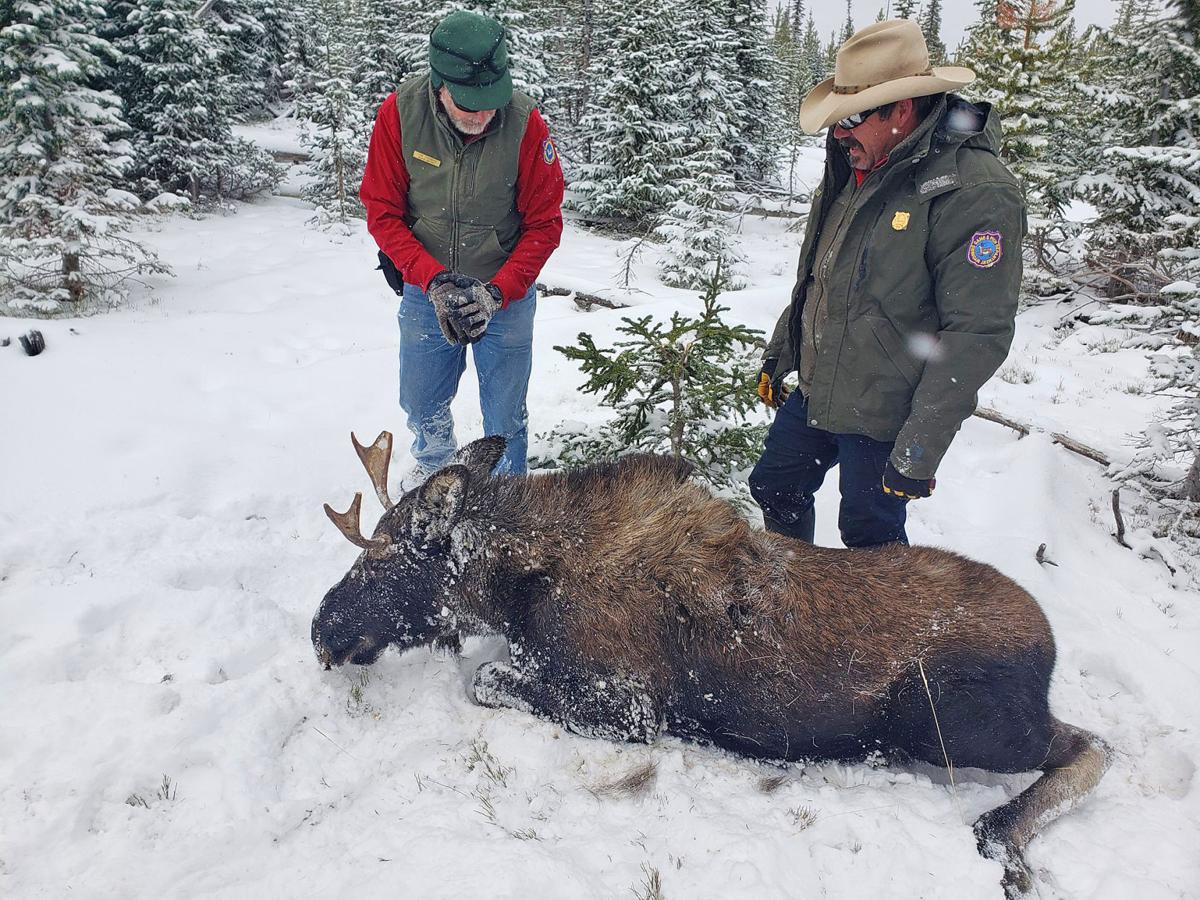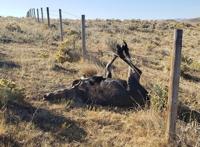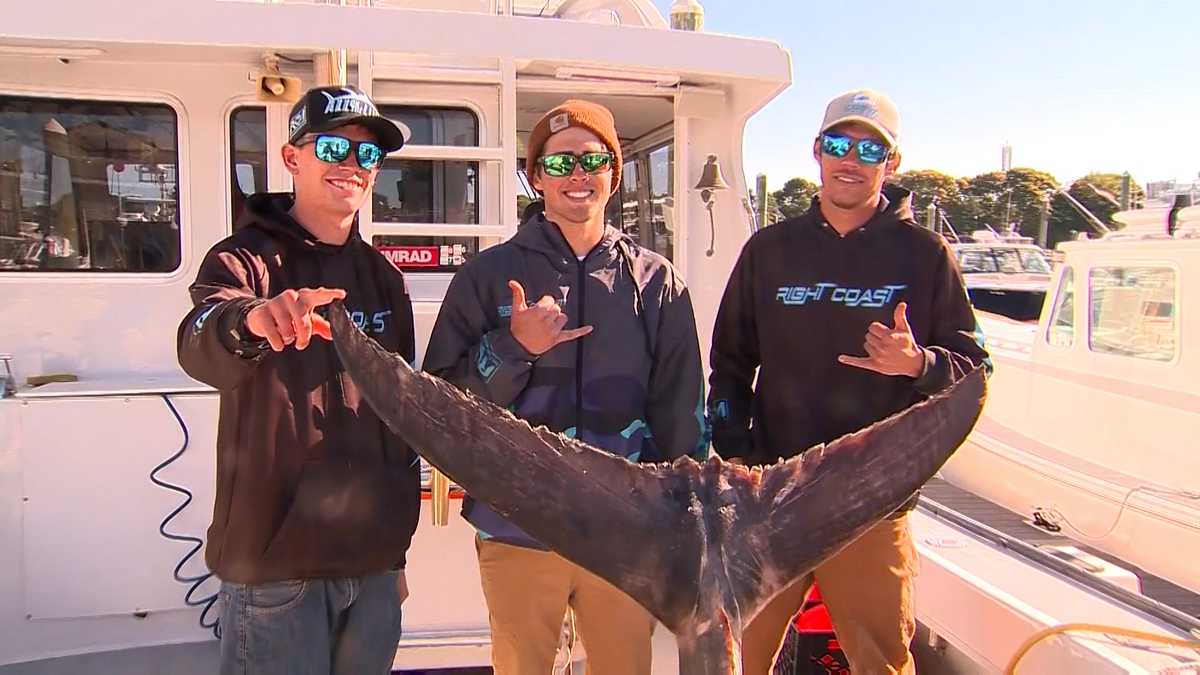Early one Saturday morning in June, Scott Bonar’s phone rang.
Bonar is fish biologist at the University of Arizona, and on the other end of the call was a biologist from the U.S. Forest Service, who asked Bonar to come immediately to help rescue threatened fish and take them to tanks at his lab.
Flames were racing through the Santa Catalina Mountains near Tucson, bearing down on the upper parts of Sabino Canyon. Federal and state wildlife officials determined that the Bighorn Fire, and the scar it would leave, could soon send ash and debris coursing through Sabino Creek, threatening one of the few remaining populations of an endangered fish called the Gila chub.
Bonar said his first thought was: “Here we go again. Another big fire.”
He’s seen the increasingly large and intense wildfires that have ravaged Arizona and the West over the past decade. And this wasn’t the first time he had been asked to help keep fish in his tanks at the university until the threat of polluted runoff from a burn scar had passed. If the Gila chub weren’t removed, there was danger that when ash and sediment washed down in a rainstorm, the fish could be smothered and die.
When Bonar rolled up to the creek in his truck, state wildlife biologists were pulling Gila chub from the water with hoop nets.
The finger-sized silvery fishes, most of them 4-6 inches long, were dropped from the nets into aerated containers resembling round coolers. Bonar drove them to the university, where students helped move about 150 fish into tanks — one group out of hundreds of Gila chub that were rescued and taken to several locations to be held temporarily.
Three months after the Bighorn Fire died down, charring nearly 120,000 acres, those fish are still swimming in Bonar’s tanks. He said the story of this rescue illustrates why he’s so concerned about how climate change is affecting fish and aquatic ecosystems, and how these threats will only grow if humans don’t act quickly to cut emissions of planet-heating gases.
The desperate attempt to save a species like the Gila chub is one of many experiences that have led biologists to decide they are witnessing a crisis so severe that they must alert the public.
In September, Bonar joined aquatic scientists around the world in issuing a statement appealing for urgent action to drastically cut greenhouse gas emissions. Bonar was the outgoing president of the American Fisheries Society, and he was joined by the leaders of 110 other aquatic scientific societies representing more than 80,000 scientists from countries across the globe.
In their statement, the scientists laid out the grim picture that has emerged from thousands of peer-reviewed studies: Climate change is inflicting extensive harm to aquatic ecosystems, both in freshwater and the oceans. The degradation of these ecosystems, which are among the most threatened on Earth, is accelerating. And many of these changes are irreversible and “will continue to worsen if we persist on our current trajectory.”
“The world’s aquatic resources are now under their greatest threat in human history,” the scientists wrote. “Delaying action to stop underlying causes of climate change will increase the economic, environmental, and societal consequences.”
They listed the many ways climate change is adding to stresses on ecosystems in streams and rivers, including more severe droughts, heat waves, wildfires and floods, and how marine life is being hammered by warming and acidification, while coral bleaching events threaten to wipe out much of the world’s living reefs.
They pointed out that freshwater ecosystems cover less than 1% of the Earth’s surface but support a third of vertebrate species and are especially vulnerable.
“Our existence and well-being depend on the health and well-functioning of aquatic ecosystems,” the scientists said. “It is time to acknowledge the urgent need to act to address climate change. Delaying action to control greenhouse gas emissions is not an option if humankind wishes to conserve the aquatic resources and environmental safety of the world.”
EXTINCTION CRISIS: Many species at risk of extinction because of human activities, UN report says
Bonar, a professor at the university’s School of Natural Resources and the Environment, said it’s very unusual for him and other biologists, who usually keep a low profile, to speak out like this.
“Fish biologists, we tend to be quiet and in the background. We don't like to put ourselves out there,” he said. But the scientists have been seeing such major changes, he said, that they decided to sound an alarm about how humanity’s heating of the planet is profoundly harming fish and other aquatic life.
“If we don't address climate change, then we've got a lot of fish that will go extinct,” Bonar said. “If we don't control emissions, then a lot of our aquatic ecosystems as we know them can disappear. And it's happening right now. These changes are happening right now.”
Climate change accelerates extinctions
The world has been rapidly losing species in what scientist describe as Earth’s sixth mass extinction, a widespread and worsening ecological unraveling driven primarily by humans.
Fish and other aquatic species are being hit especially hard. Over the past century, these species have suffered because of pollution, the destruction and degradation of habitats, the diversion and pumping of water and competition from invasive species. Climate change is compounding these stresses.
“It’s always there in the background, increasing more and more and making it tougher and tougher for the whole fish community to live,” Bonar said.
In Arizona, many stretches of flowing streams and wetlands have been lost to development, water diversions and groundwater pumping. There are 35 native fish species in the state, and about two-thirds are listed as threatened or endangered, among them Apache trout, spikedace, razorback sucker and the Gila chub.
This year is the second time Bonar and his students have had to hold Gila chub from Sabino Canyon in their tanks. During a fire a decade ago, fish were similarly rescued and brought to the university, where they remained for months.
Bonar kept the fish until the post-fire sludge had washed through and settled. Once the stream stabilized, the fish were taken back and released.
This year, students have been feeding the rescued Gila chub fish food pellets and bloodworms. The fish will stay in the tanks until it’s safe for them to return, Bonar said. It’s not clear how long that might be.
The endangered Gila chub live only in streams in Arizona and Sonora, Mexico, where they feed mainly on insects. They spawn in the spring and after monsoon rains. In the summers, when the flows shrink, they often survive in isolated pools.
To study these and other fish, Bonar regularly leads students to streams throughout the Southwest, where they catch fish to sample populations. One of their methods is electrofishing. They zap and stun the fish, scoop them out with nets, count them and measure them. Then the fish wake up and swim away.
When the water is clear enough, the researchers will strap on masks and snorkels and swim into stream pools to see the fish and estimate their numbers.
Bonar is passionate about this work. He grew up next to a lake in southern Indiana — watery “Mark Twain country,” he calls it — where he explored canoeing the rivers and cypress swamps.
At the University of Arizona, he teaches a course on freshwater fisheries management.
Wildfires threaten riparian habitats
During his two decades working in Arizona, Bonar has seen changes sweep through many watersheds. At some natural springs, the flow has decreased. He’s noticed less water in streams after years of drought. And increasingly, large fires have blackened landscapes where runoff feeds streams.
Across the West, climate change is contributing to bigger, more intense wildfires. Hotter conditions have dried out vegetation and left wildlands parched and primed to burn.
In Arizona, all 10 of the largest wildfires on record have occurred since 2002.
More and more frequently, these big fires incinerate streamside habitats, burning off vegetation that normally holds the soil in place, Bonar said. When the rains come, the sediment and charred debris wash into the water, harming and killing fish.
“Those big fires have a big impact on our fish,” Bonar said.
Warmer temperatures are also changing underwater habitats. Desert fish have adapted to a certain range of temperatures. And when the water heats up, Bonar said, many species struggle to survive.
Higher temperatures also increase the amount of moisture that evaporates from the landscape, leaving less water flowing in streams. This contributes to more fragmentation, Bonar said, and when portions of a stream are no longer connected, the fish can be stuck, unable to escape areas with warmer water.
Drying streams affect more than just fish. While streams and riparian areas cover a tiny portion of Arizona, an estimated 80% of the state’s animals spend some portion of their life cycle in these aquatic areas.
Arizona’s waterways also sustain outdoor activities and tourism, drawing residents and out-of-state visitors who fish, boat and spend money. In a report last year, researchers with Audubon Arizona estimated that water-based outdoor recreation accounts for an annual contribution of $7.1 billion to the state’s economy, ranking above mining and golf.
If more streams and wetlands continue to dry up, Bonar said, more of these vital natural places, and all the life they support, could be lost.
A chance to address the crisis
Bonar said he thought about the worsening toll of wildfires last week when he drove toward Payson for a fish survey and saw the landscape covered with charred saguaros, the cactuses devastated beyond anything he’s seen before.
He stressed that he’s an expert on fish, not fires. But over the past few years, some of the biggest fires on record have exploded in the West. Researchers have pointed to a mix of contributing factors, including the spread of invasive grasses that have pushed fires into desert areas, forests that have grown dense due to decades of fire-suppression, and the effects of climate change in fueling hot, dry conditions.
During his term leading the American Fisheries Society, Bonar traveled widely and talked with other fish biologists in places from the Midwest to Nova Scotia to the Great Barrier Reef. He said scientists told him about the many overlapping pressures affecting their species, including overfishing, habitat destruction and pollution. They also spoke about the background effects of global warming.
“Climate change is something that’s making things worse and worse. It compounds with these other factors,” Bonar said.
REEFS AT RISK: Visiting the Great Barrier Reef, a reporter reflects on the crisis of dying coral reefs
In the oceans, higher levels of carbon dioxide in the atmosphere are leading to more acidic waters. And as the water chemistry changes, shellfish including oysters and scallops are increasingly having trouble forming shells and their shells are growing thinner.
Bonar said he feels sad seeing inaction on climate change. But he also feels hopeful about the prospects of starting to tackle the crisis.
“There are so many things we can do about it, and make money for our economy and take care of this,” he said, “if we recognize there's a problem and put our good old ingenuity to work.”
In their statement, he and other scientists suggested a list of responses. They called for drastically curbing greenhouse gas emissions, transitioning rapidly toward clean energy and setting national and global targets to protect and restore ecosystems that capture and sequester carbon, including wetlands and seagrass beds.
The scientists recommended adaptation measures to prepare for and mitigate the effects of global heating on aquatic habitats.
These proposals parallel other recent efforts by scientists to advocate for solutions in addressing climate change, preserving water sources and saving natural ecosystems.
Another group of scientists and experts recently launched a global initiative for groundwater sustainability. Stressing a need for effective management of groundwater, they said pumping has impacted “environmentally critical” streamflow in more than 15% of streams globally and could affect a majority of streams by mid-century.
Other scientists have focused on the potential for nature-based solutions to help preserve biodiversity and address climate change.
The renowned biologist Edward O. Wilson has pointed out that species are now going extinct "somewhere between 100 and 1,000 times faster than before the spread of humanity, and the rate is accelerating." He has warned that if the trend continues, most species could be gone by the end of the century.
Wilson has called for protecting “Half-Earth” — managing half the land and ocean areas as natural habitat to reverse the extinction crisis and ensure the health of the planet.
Other scientists have advocated for a target of protecting 30% of Earth by 2030, and designating an additional 20% as “climate stabilization areas,” under what they call the Global Deal for Nature.
Recently one group of researchers identified priority regions for restoring ecosystems around the world. They focused on areas where farmlands and grazing lands could be managed to let nature come back, saving species and allowing the plants and land to soak up carbon.
When aquatic scientists from around the world released their statement calling for cuts to greenhouse gas emissions, they stressed that failing to act would imperil future generations. They also noted how preserving habitats can help store carbon.
Antonio Camacho, chairperson of the European Federation for Freshwater Sciences, said in a statement that when aquatic ecosystems are healthy, they’re “important allies that capture carbon and reduce climate warming.” But when they’re damaged, he said, “they may let go of the large amounts of carbon they hold.”
ENVIRONMENTAL ROLLBACKS:How Trump's new rules affect air, water, wildlife in Arizona
The American Fisheries Society and the other scientific societies didn’t mention the U.S. election and aren’t taking a position on the presidential candidates or any other candidates. Bonar said he hopes the information presented by the global group of scientists will help the public, and that includes in making decisions about which candidates to vote for.
The American Fisheries Society did, however, recently take a stance against the Trump administration’s rollback of federal protections for many streams and wetlands. The group filed a brief in U.S. District Court supporting 17 states in their challenge against the Trump administration’s new rule, which strips away protections under the Clean Water Act for many creeks and washes.
The change especially affects ephemeral streams, which flow after rains but otherwise sit dry. Many of the tributary streams and washes in Arizona fall into this category, and state environmental officials have been holding a series of meetings to consider ideas for new state regulations to protect streams and wetlands.
In its court brief in May, the American Fisheries Society said the Trump administration’s new rule leaves many aquatic ecosystems unprotected and, if it’s allowed to stand, “will cause irreparable harm.”
Ian James reports on climate change, water and the environment for The Arizona Republic. Send him story tips, comments and questions at ian.james@arizonarepublic.com and follow him on Twitter at @ByIanJames.
Support local journalism: Subscribe to azcentral.com today.
Environmental coverage on azcentral.com and in The Arizona Republic is supported by a grant from the Nina Mason Pulliam Charitable Trust. Follow The Republic environmental reporting team at environment.azcentral.com and @azcenvironment on Facebook, Twitter and Instagram.
Read or Share this story: https://ift.tt/2TGH0Jc
The Link LonkNovember 01, 2020 at 02:00AM
https://ift.tt/2TGH0Jc
With world’s aquatic life at risk, scientists issue rare call to action on climate change - The Arizona Republic
https://ift.tt/35JkYuc
Fish













